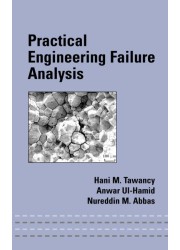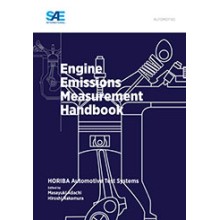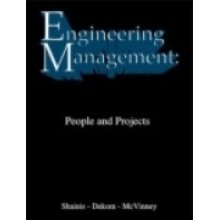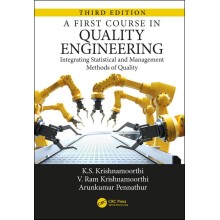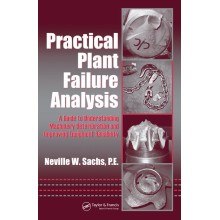Practical Engineering Failure Analysis
ISBN: 9780824757427
Author: Hani M. Tawancy, Anwar Ul-Hamid, Nureddin M. Abbas
Dispatch Time: 15 - 30 Days
Our Price: £195.30
Discount : 10%
Quantity:
-
Add to Compare
Filling a gap in the literature, Practical Engineering Failure Analysis vividly demonstrates the correct methodology to conduct successful failure analyses, as well as offering the background necessary for these investigations. This authoritative reference covers procedures to reduce the occurrence of component failures due to errors in material selection, design, and manufacturing, as well as fatigue, stress, cracking, creep, and operating conditions.
A single-source tool to help professionals avoid costly system failures, improve plant operation and system reliability, and prevent accidents related to component malfunction
Table of Contents
INTRODUCTION
Engineering Products and Their Performance
Engineering Properties of Materials
Classes of Engineering Alloys
Structure of Engineering Alloys
Failure of Engineering Products
Imperfect vs. Defective Products
Definition and Objective of Failure Analysis Investigations
Approach to Failure Analysis Investigations
Background Requirements of the Failure Analyst: Scope of the Book
ENGINEERING DESIGN-FABRICATION-PERFORMANCE
Introduction
Stages of Engineering Design
Material Selection
Fabrication of Engineering Alloys
Solidification of Ingots
Cold Working
Recrystallization
Thermomechanical Processing
Primary Fabrication Techniques
Secondary Fabrication Techniques
Joining Techniques
Service Performance
Common Causes of Failure
PRINCIPLES OF MECHANICS
Introduction
Concepts of Mechanics
Concepts of Mechanical Force
Concepts of Work and Energy
Force and Motion
Conservation of Energy
Concept of Machines
State of Mechanical Equilibrium
Concept of Strain
Concept of Stress
Hook's Law
PROPERTY EVALUATION
Introduction
Nondestructive Tests
Destructive Tests: Measurement of Mechanical Properties
STRESS ANALYSIS
Introduction
Uniaxial State of Stress
Generalized State of Stress
Multiaxial Stress-Strain Relationship
Loading Conditions and Stress
Thermal Stress
Type of Stress Required to Produce Plastic Deformation
Maximum Stresses
Design Stresses
Criterion for the Onset of Plastic Deformation (Yielding)
Stress Concentration
Criteria for Mechanical Failure
Applications: Analysis of Stresses in Specific Components
Solved Problems
MACROSCOPIC ASPECTS OF FRACTURE AND FRACTURE MECHANICS
Definition of Fracture
Objective of Fracture Mechanics
Use of the Terms Brittle and Ductile in Fracture
Crack Loading Modes and Macroscopic Morphology of Fracture Surfaces
Crack Propagation Under a Plane Strain Condition
Crack Propagation Under a Plane Stress Condition
Crack Propagation Under a Mixed State of Plane Strain and Stress
Sequence of Events Leading to Fracture
Classification of Crack Propagation Modes According to Loading Conditions
Variables Affecting Fracture Behavior
Basic Principles of Fracture Mechanics
Linear Elastic Fracture Mechanics (LEFM)
Use of Fracture Mechanics in Design
Concept of Allowable Crack Size
Use of Fracture Mechanics in Failure Analysis
Selection of Materials Resistant to Fracture
STRUCTURE OF ENGINEERING ALLOYS
Introduction
Principles of Thermodynamics
Elements of Internal Structure
Structure of the Atom
Significance of the Electronic Structure of Atom
Electronic Structure and Chemical Properties: Classes of Elements
Origin of Interatomic Binding Forces
Types of Interatomic Binding Forces
Bond Strength and Properties of Materials
Arrangement of Atoms in Perfect Crystals
Understanding the Microscopic Plasticity of Perfect Crystals
Crystal Imperfections
Understanding the Microscopic Plasticity of Real Crystals
Alloy Phases and Phase Change
Equilibrium Phase Diagrams
Methods of Strengthening Engineering Alloys
MATERIALS CHARACTERIZATION
Introduction
Techniques for Microstructural Characterization
Techniques for Chemical Analysis
Microstructural Engineering Alloys
CORROSION
Introduction
Low-Temperature Aqueous Corrosion
High-Temperature Corrosion
METALLURGICAL ASPECTS OF FRACTURE AND FRACTOGRAPHY
Introduction
Microscopic Aspects of Crack Nucleation
Microscopic Mechanisms of Crack Propagation
Fracture Modes and Fractography
FAILURE ANALYSIS PROCEDURE
Introduction
Definition of the Problem
Technical Background
Experimental Program and Analysis
Mode of Failure vs. Cause of Failure
Data Interpretation and Terminology
Recommendations
Failure Analysis Reports
CASE STUDIES
Introduction
Failure of Engineering Alloys Due to Improper Processing Practice
Failure of Engineering Products During Manufacturing
Effect of Variations in Design on Service Performance
Failure of Engineering Products During Service Because of Unanticipated Service Conditions
Failure of Engineering Products During Service Because of Improper Material Selection
Failure of Engineering Products During Service Because of Improper Service Conditions
APPENDIX A: CHEMICAL COMPOSITION AND CLASSIFICATION OF SELECTED STEELS
APPENDIX B: UNITS OF MEASUREMENTS IN MECHANICS
APPENDIX C: MOMENT OF INERTIA OF SELECTED CROSS SECTIONS
INDEX
Write a review
Your Name:Your Review: Note: HTML is not translated!
Rating: Bad Good
Enter the code in the box below:
Copyright © 2014 Engineering Standards Bureau. All Rights Reserved.
Developed By Zoom Into Web


